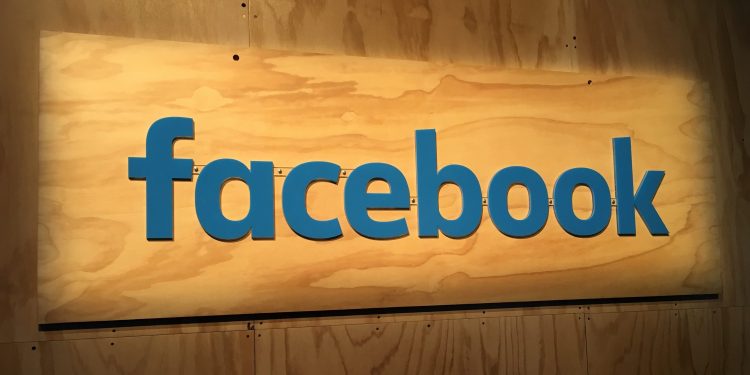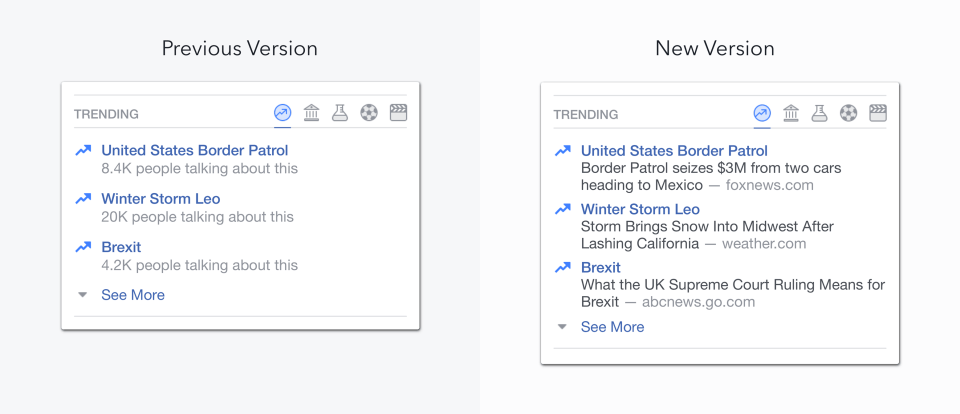Facebook has begun rolling out new updates to its trending topics, which the social networking company hopes will improve the experience, one that has been fraught with confusion and controversy. Claiming that it has been “listening to people’s feedback,” Facebook tweaked its product to feature publisher headlines below each topic name, while also improving how topics are identified as trending. Lastly, it’s done away with personalization, opting instead to show everyone in the same region the same topics.
Launched in 2014, Trending was a response to efforts on other social media networks that surfaced popular topics relevant to users. “It was designed to help people discover interesting and relevant topics being discussed on Facebook,” the company explained in a Frequently Asked Questions section. But it became a lightning bolt for controversy when accusations were levied at the company over human editors censoring conservative pundits and sites, a claim that Facebook and its chief executive Mark Zuckerberg denied. After an investigation, the company declared there was no “systematic political bias” but ultimately removed human editors from the process.
Today’s three changes should be a means to restore some relevance to Trending. Previously, when you viewed these topics, it was difficult to ascertain why it was relevant. And in an era where the specter of fake news has become ever-present, Facebook has to show that it’s surfacing actual news and not hoaxes and made-up content. It acknowledges that this update “may help…because the updated system identifies groups of articles shared on Facebook instead of relying solely on mentions of a topic.” This is why now topics shown will include a headline from a publisher’s article.
Facebook said that this was the “most requested feature addition” right now. It’s said that headlines won’t be rewritten. The company learned its lesson — it’s going to show the same headline that appears on the actual article.
But how is a headline chosen? Facebook stated that it’ll be automatically selected based on factors like the engagement both around the article and publisher, and whether other articles are linking to it. Similar to Techmeme, perhaps?
A problem some people have had surrounds why some topics are shown versus others. During this past weekend’s Women’s March, Twitter showed the event as a trending topic, but it was nowhere to be seen on Facebook. The company has yet to respond to inquiries from VentureBeat about why it wasn’t featured.
Facebook explained that “previously, topics may have trended due to high engagement … around a single post or article.” That changes today, when the company said it’ll look at the number of publishers that are posting articles on the social network around the same topic, along with the engagement in the articles. “This should surface trending topics quicker, be more effective at capturing a broader range of news and events from around the world and also help ensure that trending topics reflect real world events being covered by multiple news outlets,” Facebook claimed.
With the social graph, the service boasts the ability for personalized experience. Whether it’s the News Feed or any other product, Facebook has strived to provide users with what it hopes is data and information relevant to the individual. But with Trending Topics, that all changes. Now the list of topics that are shown will be for a larger audience, bucking interests in favor of geography. Now everyone in the same region will see the same topics.
Trending Topics is still currently only available in the U.S., the U.K., Canada, Australia, and India on both the web and mobile. The aforementioned changes will be rolling out today in the U.S.



